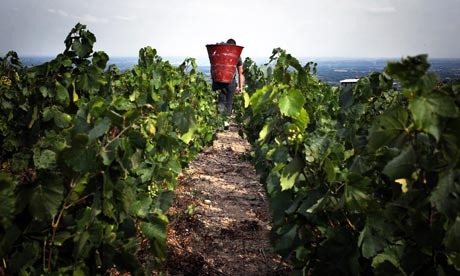Making wine in Ethiopia, when the whole world has seen pictures of famine there, may seem absurd, if not indecent. But that would be to forget that this country of 88 million people is twice the size of France and that malnutrition is mainly in the far south, in the region bordering Kenya and Somalia.
Ethiopia is not just made up of arid land, but has a diversified environment of high plateaux, lush valleys, and dozens of lakes and volcanoes. It has six different climatic zones. Nor is winemaking in Ethiopia a new idea. The Italian forces who occupied part of the country from 1936 to 1941 planted vines near the capital, Addis Ababa, as well as in the south-east, but only for their own consumption.
This, however, is an entirely different project because it should be a money-earner for the country. Launched in 2007 by the Ethiopian government and the French group Castel (already active in beer and breweries), it is an attempt to diversify agriculture and promote the country's products.
"If our wine can contribute to improving this country's image, we'll have succeeded," said Robel Seido, head of sales at Castel. "We want to export nearly half of our production, especially to the US, which has a large Ethiopian community." The remainder is earmarked for the domestic market, but will be of a far higher quality than the few existing table wines.
It took seven months of research to select the area for the new vineyards. Dire Dawa, in the east of the country, was the first choice, but it was relatively inaccessible and considered too close to war-tornSomalia. In the end a site near the town of Ziway, 170km to the south of Addis Ababa, was chosen in 2008 and 750,000 vines were planted, employing a labour force of 750, mostly local people.
The vines were brought from Bordeaux and cover an area of 125 hectares, which should produce some 800,000 bottles a year. They are all French varieties: merlot, syrah and cabernet sauvignon for the red wine, which will account for 90% of production, and chardonnay for the remaining 10% of white. In line with tradition, a rose bush has been planted at the end of each row to serve as a warning of mildew.
"The soil is slightly sandy and we are in a temperate zone with an ideal climate," said Olivier Spillebout, the wine expert in charge of quality. "The climatic conditions would even allow us to have two harvests a year but since we want to emphasise quality we'll stick to one. We should produce light, fruity wines."
The first grape harvest will be in November and the first bottles will go on the market early next year. The long-term aim is to compete with South African wines, considered the best on the continent. However, planting vines in the Ethiopian Rift Valley, by a lake at an altitude of 1,600 metres, is not without pitfalls. "We were getting intruders like pythons, hyenas and even hippopotamuses in the vineyards," said Guy Campillo, in charge of the estate. "As a result we had to dig a two-metre-wide trench around the vineyards to protect them. Since then it's been fine."
He is waiting for the grapes to mature, for the cellar walls to be finished and a dozen stainless steel vats to be unpacked. Meanwhile, just outside the vineyards, a troop of antelopes were grazing peacefully.


No comments:
Post a Comment